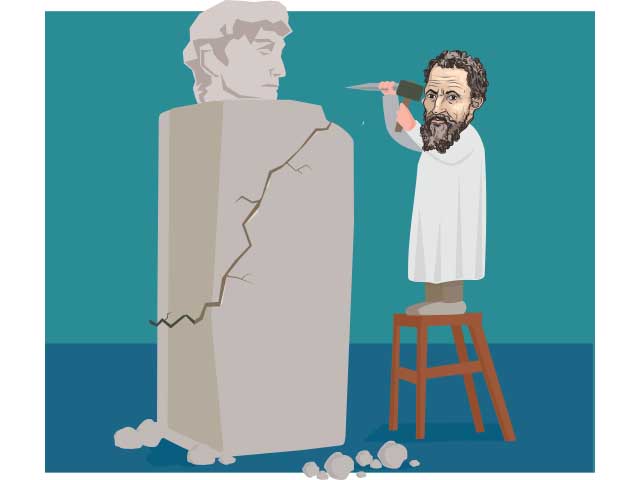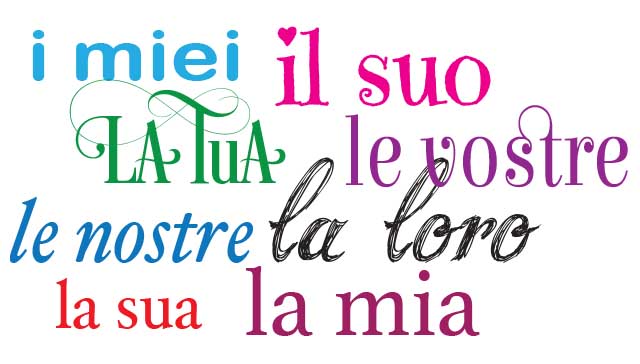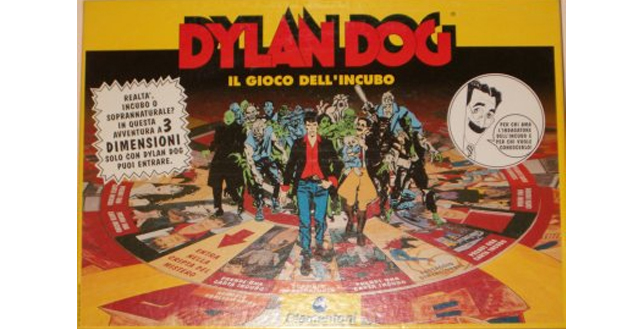
Il tuo, il mio, e il nostro!
A chi appartiene?
Yours, Mine, and ours! Who does it belong to?
Come rendere il possessivo nella lingua italiana.
How to make things possessive in
the Italian language.
In inglese per indicare la proprietà di un oggetto, aggiungiamo un apostrofo al nome di una persona seguito da una “s.”
In English to indicate ownership of an object, we add an apostrophe to a person’s name followed by an “s.”
John’s Vespa.
In italiano, qualcosa che appartiene a qualcuno è espresso in una costruzione frase utilizzando la preposizione “di.”
In Italian, something that belongs to someone is expressed in a sentence construction using the preposition “di.”
La vespa di Giovanni.
È tutto chiaro? Bene! Passiamo ora agli aggettivi possessivi.
Got it? Good! Let’s move on to possessive adjectives.
In italiano, gli aggettivi possessivi e i pronomi possessivi hanno le stesse forme. Precedono sempre il sostantivo e devono sempre concordare in genere e numero del sostantivo che modificano.
In Italian, possessive adjectives [my, your, his, her, its, our, their] and the possessive pronouns [mine, yours, his, hers, its, ours, or theirs] have the same forms. They always precede the noun and must always agree in gender and number of the noun they modify.
In Italian, the possessive adjectives change according to two things:
- Whether you’re talking about a single thing, or more than one thing (single vs plural)
- Whether you’re talking about a masculine or feminine noun
Importante: Il genere della persona o l’oggetto che fa il possesso è immateriale.
Importante: The gender of the person or the object doing the possessing is immaterial.
Ripeto: gli aggettivi possessivi concordano con il sostantivo con cui vanno, NON con la persona che è il proprietario.
I repeat: possessive adjectives agree with the noun they go with, NOT with the person who is the owner.
Questo è completamente diverso dall’uso inglese. Diamo un’occhiata ad alcuni esempi:
This is completely different from English usage. Let’s look at some examples:

Michelangelo scolpisce la sua statua.
Michelangelo carves his statue.
It doesn’t matter if Michelangelo is a man, the important thing is that the statue that belongs to Michelangelo is a feminine noun “la statua.”
Here is another example:
Vedi quella donna? Il suo volo parte per Milano alle due.
Do you see that woman? Her flight departs for Milan at two o’clock.
It doesn’t matter that is is a woman doing the possessing, the important thing is that her flight – il suo volo – is a masculine noun.
Gli aggettivi possessivi e i pronomi possessivi hanno le stesse forme. Gli articoli definiti sono generalmente usati prima di entrambi.
Possessive adjectives and possessive pronouns have the same forms. The definite articles are generally used before both.

| Masculine | Feminine | Adjective | Pronoun | ||
| il mio | i miei | La mia | Le mie | My | Mine |
| il tuo | i tuoi | La tua | Le tue | Your | Yours [fam. sing] |
| il suo | i suoi | La sua | Le sue | His, her, its | His, hers, its |
| il Suo | i Suoi | La Sua | Le Sue | Your | Yours [form. sing] |
| il nostro | i nostri | La nostra | Le nostre | Our | Ours |
| il vostro | i vostri | La vostra | Le vostre | Your | Yours [fam. pl.] |
| il loro | i loro | La loro | Le loro | Their | theirs |
| il Loro | i Loro | La Loro | Le Loro | Your | Yours [form. pl] |
Questo è il nostro treno, quello è il vostro.
This is our train, that is yours.
La mia penna gialla. La sua penna gialla.
My yellow pen. His yellow pen.
Il vostro bicchiere. I vostri bicchieri.
Your drinking glass. Your drinking glasses.
The article “the” is omitted when a possessive adjective (except loro and Loro) precedes an unmodified singular noun denoting family members.
Brief example:
| Il padre = mio padre | La madre = mia madre |
| Il marito = mio marito | La moglie = mia moglie |
| Il figlio = mio figlio | La sorella = mia sorella |
Mia sorella va spesso a Firenze.
My sister often goes to Florence.
Vostro cugino vuole sposare la sua fidanzata l’anno prossimo.
Your cousin wants to marry his girlfriend next year.
Non conosco vostre cognate.
I don’t know your sister-in-laws.
Attenzione: The article “the” is retained when a possessive adjective precedes a modified singular noun or diminutive denoting family members. It is optional when used with “nonno” or “nonna.”
Il mio babbo e la mia mamma arrivano giovedì.
My dad and my mom arrive Thursday.
La mia sorella maggiore canta bene.
My big sister sings well.
Il figliolo studia la matematica all’università.
My young son studies math at college.
Nostra nonna [or la nostra nonna] fa la pasta buona.
Our grandmother makes good pasta.
Ora tocca a te! Provatelo!
Now you give it a try!
Maria vuole festeggiare il compleanno di [her husband] ___________________
Noi non conosciamo [your French cousins Alberto e Antoinette] ___________________
[Their purses] _____________ sono gialle, [ours] _____________ sono blu.
[Her husand] ______________studia all’Università di Roma.
Francesca, come si chiama [your little sister] ___________________?
[Paolo’s parents] _________________ abitano a Arezzo, [mine] _____________ abitano a Napoli.
Ti lascio con questo film clip dal film “Cinema Paradiso”: La piazza è mia!
I leave you with this film clip from the movie “Cinema Paradiso”: The piazza is mine!










